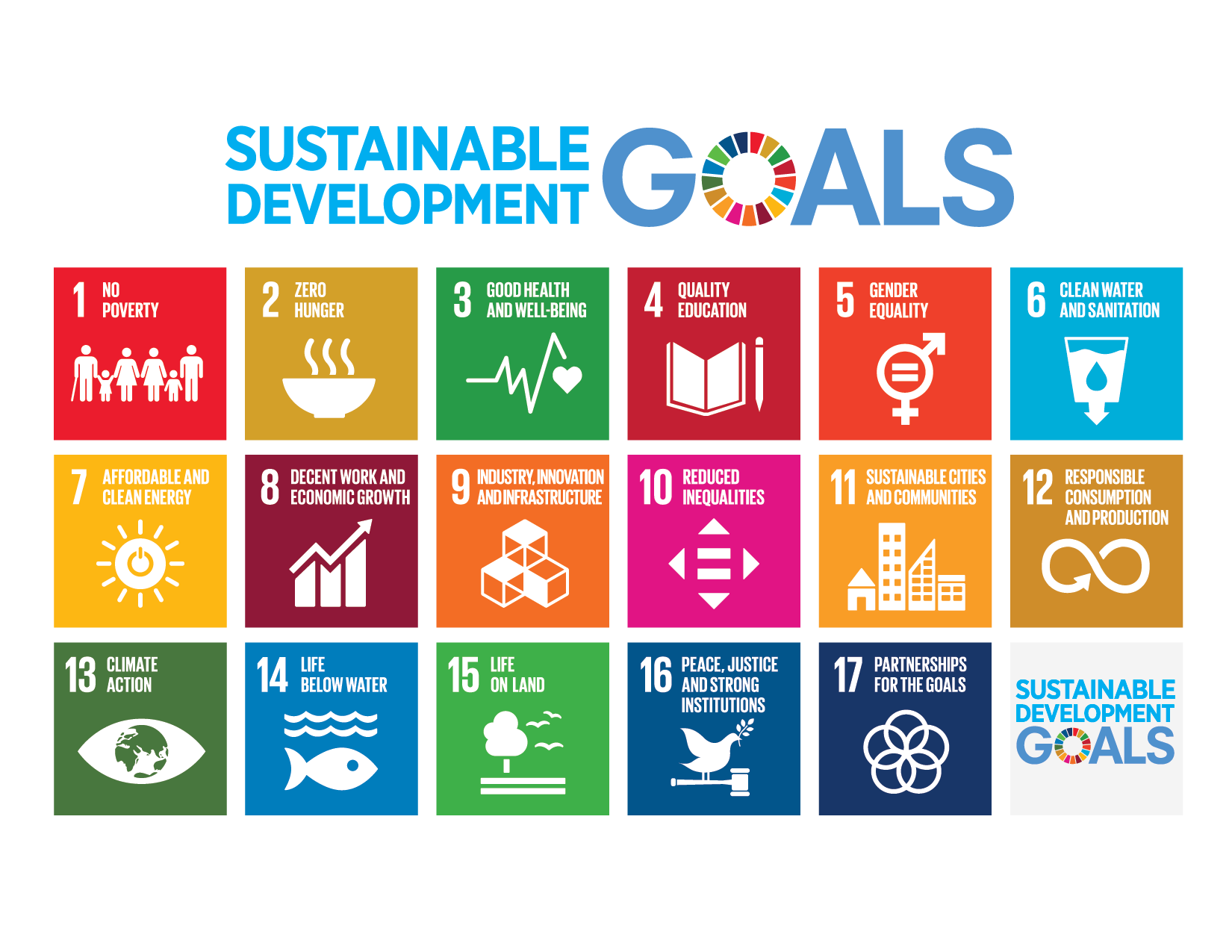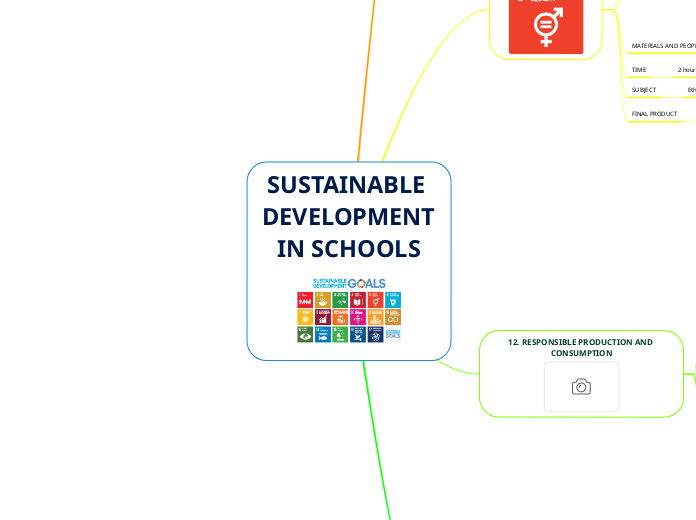SUSTAINABLE DEVELOPMENT IN SCHOOLS

4. QUALITY EDUCATION
OBJECTIVE
To promote understanding of the reality of children in the world.
Development of a sense of solidarity
PRESENTATION OF THE ACTIVITY
We explain that we are going to see different images
about children in Africa to get to know how schools are there and how children learn there and the resources they have.
Then, we ask them individually to write down on the card an idea that strikes them and that they think that catches their attention and to draw a picture on the other side to represent this idea on the other side of the card.
Sitting in a circle, they present their drawing, and the rest of the group will have to interpret what they have wanted to say.
Once all the children have finished presenting their drawings, place the cards on the wall of the classroom.
If there are children in the classroom whose families have travelled to other countries or migrated, ask them about their other countries, ask them what they know about the reality of these countries about the reality of these countries.
Then to promote that students think and reflect, the teacher can ask some questions such as “What other rights do you think are important for the children ? Are the schools in Nicaragua the same as yours? Do the children in Nicaragua do the same things that you do? Why do some children have to work after school?
MATERIALS AND PEOPLE
different images, a sheet of paper, coloured pencils or markers
TIME
2 hours
SUBJECT
Ethics
FINAL PROJECT
A web page will be created where each student will upload the photo he/she has taken and a brief reflection on the subject that has been dealt with.
5. GENDER EQUALITY
OBJECTIVE
Promoting gender equality
PRESENTATION OF THE ACTIVITY
Create groups and students have to create several cards with gender stereotyped phrases on them and other ones that don't have gender stereotypes. Some examples might be:
-Girls don't know how to play football.
-Boys have to protect girls.
-Girls and boys are the same.
-Girls have to wear earrings.
Cards are then drawn at random and students have to say whether it is true or false. The moment someone falls into the stereotype by saying that it is true, they all reflect on the issue and the rest of the students give arguments why they think it is not so.
MATERIALS AND PEOPLE
Paper or cardboard, markers, a box or a bowl where you can put all the cards.
TIME
2 hours
SUBJECT
Ethics
FINAL PRODUCT
We will ask each of our students to create a blog in order to write what they have learnt about gender equality.
12. RESPONSIBLE PRODUCTION AND CONSUMPTION
OBJECTIVE
Educate them in the 3 R
To raise awareness about the importance of the sustainability of the earth.
To show them how to recycle and the importance of it
To teach them the importance of reusing and not wasting material.
To be aware that they have to make a responsible consuption
PRESENTATION OF THE ACTIVITY
AVOID POLLUTING
This iniciatives are all connected and are guided to sixth grade students.
Pollution is a very important and worrying topic currently. That's way it is important that our students know what it is and the things they can do to avoid it. We will start by telling them and explaining to them what it is and giving them the chance to reflect on it. Then, we will ask them to write some of the advices they would give to a person who wants to avoid pollution. STEPS TO BE FOLLOWED TO REACH THE OBJECTIVE
Children design their own posters to put up around the school using the computers provided by the school (digitally) or even in paper.
For that teach them what happens if they don't do one thing or another or if they do or don't do what will happen.
That posters will be about:
-Turning off the lights
-When cleaning teeth do not let the tap running
-Try to use plastic as little as possible
RECYCLE
In this iniciative, that will last for two weeks, we will teach our students how to recycle and the importance of it. First, we will tell them how containers work, this is, the meaning of their colours. After that, we will play a movie where they will see the importance of recycling: Wall-e. Then, we're going to ask them to bring waste from home such as empty bottles, pots, boxes... and a big box. We will use material from school too.
The following week, we're going to create a workshop where the students are going to design 4 containers with the big boxes (yellow, green, blue and brown) and put all the objects, that we and the students have brought, together so they have to think and discuss about where each one goes. This way, they will learn how recycling works in an interactive way.
REUSE
Explain the definition and then give the information about the coltan mineral so they can learn how difficult it is to get it and in that way be able to use more times the things they have at home, for example a digital gadget. The video link: https://youtu.be/JcJ8me22NVs
Following the last iniciative, and connecting them both, we will make sure that our students fully understand that we must take care of our planet in every way possible.
This iniciative will last a week. After learning about recycling, we will make sure that they know it is important that they don't waste and to reuse. To do this, we will ask them to bring a toy that they don't play with anymore. We will put all of the toys together and we'll ask them to choose one of them to play with. Students will see that the toys that were useless and uninteristing to them can live a longer life with one of their classmates and give them good times.
We will then explain to them that every object can have a second chance with other people and that they don't have to throw them away when they get bored.
REDUCE
The last iniciative follows the workshop where the students had to bring old toys.
After learning about recycling, not wasting and reusing we will talk about consumerism. It is important that they understand from a young age what consumerism is and understand that it brings us back to the first topic: pollution.
This iniciative will last a week in which we will make them realize all the iniciatives are connected by explaining it and asking for them to tell the class what they have learned. To finish this iniciatives, they will have to work in groups to make a presentation about the whole process and what they've learnt.
MATERIALS AND PEOPLE
Computers (ICT), sheets of paper, colors, brushes, paints, big boxes and waste from home
TIME
1 month
SUBJECT
Natural Sciences and Social Sciences
FINAL PRODUCT
By the end of the year we will organize an exhibition on June 19th named The Greenhouse. All of the families, students and teachers will gather in the conference hall to see all the work they've done during the course. After that, a huge picnic will take place.
15. LIFE OF LAND

OBJECTIVE
To raise awareness about the importance of the nature.
To love ourselves and the environment, of thanking everything that the earth gives us.
To go ouside in the nature with the hole class
to work on the life of terrestrial ecosystems in order to raise awareness of their importance.
PRESENTATION OF THE ACTIVITY
PLANNING:
STEPS TO BE FOLLOWED TO REACH THE OBJECTIVE
If there are 20 students in the class: make 5 groups of 4 people and assign each group a different tree seed.
Go to the nearest farm from the school.
Once they have finished planting the tree, we will teach them that they must take care of it and keep it alive and that it needs to be cared for.
Also, once a month we will take them outside to the forest. We will ask each of the students to write or draw something that they have observed during the class. As a result, the will only need their notebooks and pencils in order to complete the task. Thanks to this they will learn how to appreciate the nature. Then, the teachers will upload videos and photos of those trips in our classroom.
The children plant seeds and take care of them every day, watering them, to see how they grow. It is explained to them that they are going to plant a plant and therefore, they have to bring an empty yoghurt pot and a couple of lentils or beans.
That same day they will fill the yoghurt pot with soil, put the seed in and water it.
Once they have done this, they will sit in a circle and the teacher will ask them what they think will happen, how much they think it will grow, why they think it will grow... All this with the aim of checking the children's previous knowledge of the subject.
Once this activity has been carried out, in the next few days of class they will work on basic knowledge of the subject and at the same time they will be able to observe the evolution of the experiment. Once the whole process is done, they will create a blog where they will post pictures of the process of the experiment they have done and explain the process and the results obtained.
MATERIALS AND PEOPLE
Compost , Seeds, Water, Mud , soil, yoghurt pots.
TIME
1 year
SUBJECT
Natural Sciences
FINAL PRODUCT
Build a common project in which the whole class collaborates
Teach children the need to take care of our planet
Participate in an important cause: caring for the environment
